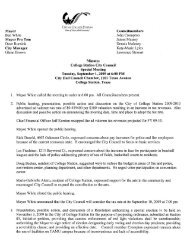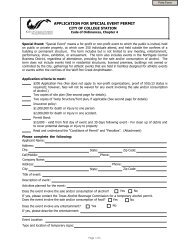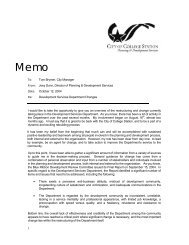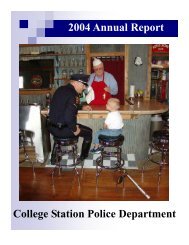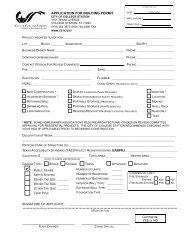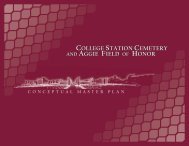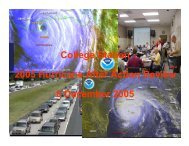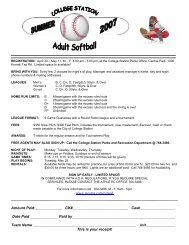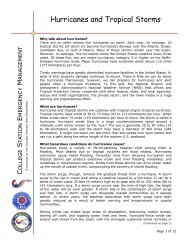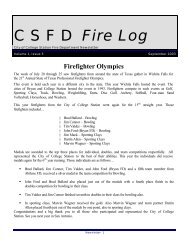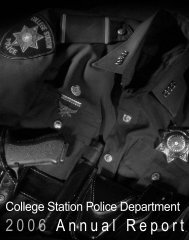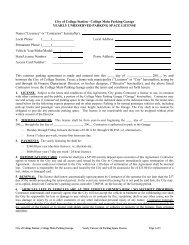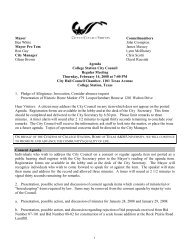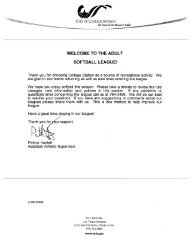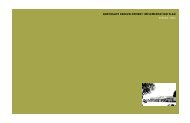standard operating procedure college station fire department
standard operating procedure college station fire department
standard operating procedure college station fire department
Create successful ePaper yourself
Turn your PDF publications into a flip-book with our unique Google optimized e-Paper software.
SUBJECT: Hose Testing Procedure SOP: 300.5.10<br />
CATEGORY: PAGE: 2 of 3<br />
Testing Procedure for Double-Jacketed Hose<br />
• Connect apparatus to water supply.<br />
• Stretch the hose line out in one length not to exceed 300’.<br />
• Attach one end of the hose to a pump discharge and attach a shutoff device at the other end<br />
of the hose.<br />
• Make sure all couplings are tight and a line is drawn on the hose at the point it makes contact<br />
with the coupling.<br />
• Try to flow the line in a manner that the hose testing area remains dry.<br />
• After the line has been shut off, increase the pump pressure to the required PSI.<br />
• When the pump is set at the required pressure the time will start.<br />
• After the test is complete, decrease the pump pressure, open the shut off and flow water to<br />
cool the pump.<br />
• Drain the hose of all water and check the couplings for any sign of separation from the hose.<br />
• Roll up hose to be cleaned and dried before being placed back on the apparatus.<br />
• Disconnect apparatus from water supply.<br />
Steps for testing Large Diameter Hose (LDH)<br />
• Attach apparatus to water supply.<br />
• Stretch the hose line out in one length not to exceed 300’.<br />
• Connect one end to the pumper discharge using a 3” line and the required adapter and the<br />
other end to a shutoff device.<br />
• Make sure all couplings are tight and a line is drawn on the hose at the point it makes contact<br />
with the coupling.<br />
• Flow water through the line at approximately 50 PSI until all air has been displaced and shut<br />
off.<br />
• After the line has been shut off, increase the pump pressure to the required PSI><br />
• When the pump is set at the required pressure the time will start.<br />
• After the test is complete, decrease the pump pressure, open the shut off and flow water to<br />
cool the pump.<br />
• Drain the hose of all water and check the couplings for any signs of separation from the hose.<br />
• Record the hose information on form (see attached) and forward to “C” Shift-Station#2 Lt.<br />
• Disconnect apparatus from hydrant.<br />
• Clean, wipe dry, and reload hose back onto apparatus.<br />
Personnel Safety<br />
Safety is of the utmost importance when hose is being tested. Personnel shall wear their boots,<br />
leather work gloves, helmet, and eye protection when working with and handling the hose. All<br />
personnel (except the pump operator) shall stand well away from the hose while it is being tested.<br />
No hose line shall be connected to a discharge on the pump panel next to the operator.<br />
Hose Testing Record Form is page 3.<br />
rev: 11/95, 7/97, 3/99, re#’d 11/02



